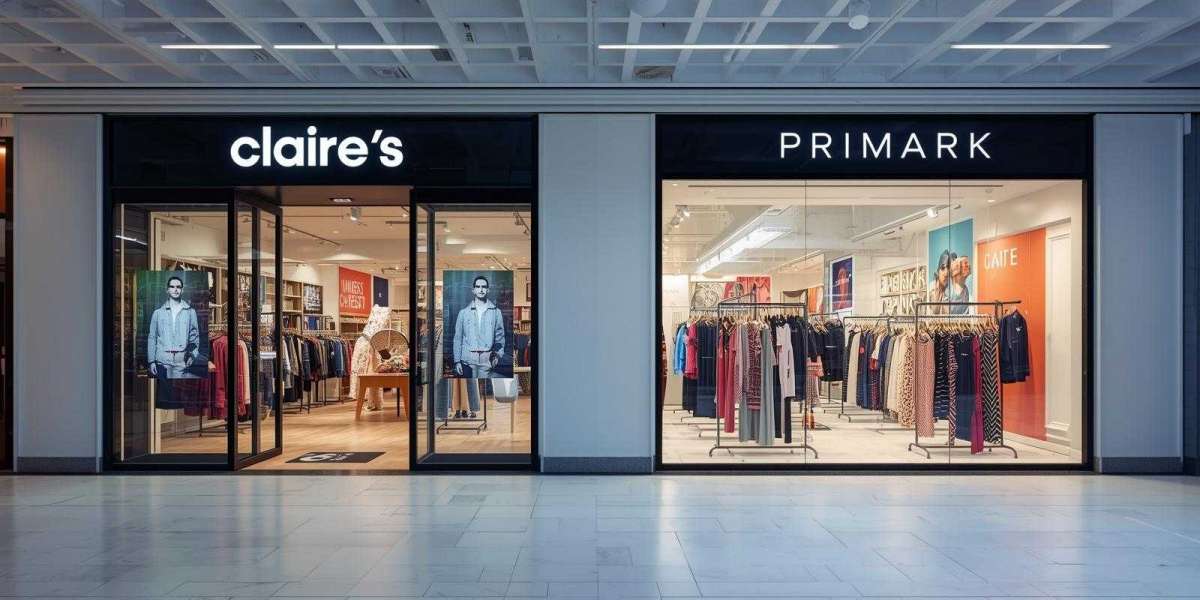The way we shop is evolving faster than ever, and nowhere is this more evident than in the UK high street. From Primark to Claire’s, retailers are embracing new technologies to keep pace with shifting customer expectations. One of the biggest changes? How we pay.
Payment platforms and payment processors are becoming increasingly sophisticated, offering retailers more efficient, secure, and flexible ways to accept payments online and in store. Gone are the days when cash and card were the only options. Today, integrated payments, digital wallets, Buy Now Pay Later, and even pay by link services are reshaping how transactions take place. These innovations not only make life easier for shoppers but also streamline operations behind the scenes, helping retailers like Primark adapt to an industry in flux.
Digital Success Stories: How Retailers Are Adapting
Primark has made headlines with its bold digital shift. While many retailers are scaling back omnichannel strategies, Primark has expanded its click and collect services and launched its first customer facing mobile app. Already live in Ireland and Italy, the app is set to roll out in the UK within the next 18 months.
This app is more than just an online catalogue; it’s part of a wider omnichannel approach designed to create a seamless experience across digital platforms, mobile, and physical stores. By piloting the app in two very different markets, Primark can test how shoppers engage digitally and apply those learnings as it broadens its reach.
All this is happening against the backdrop of rising store closures across the retail sector, a trend accelerated by economic pressures and shifting shopping habits.
Why Are Retail Stores Closing?
Three key factors stand out:
- Changing consumer behaviour: Shoppers are increasingly bypassing the high street in favour of online giants such as Amazon and Temu.
- Economic strain: Inflation, higher interest rates, and tariffs are pushing up costs across the board. Grocery prices have jumped 23% since 2021, while certain electronics categories could climb by as much as 68%.
- Strategic missteps: Too many retailers have treated physical stores as purely transactional. Modern consumers expect experiences, not just products.
Claire's Faces Stores Closing as Retailer Files for Bankruptcy
Fashion accessories chain Claire's has filed for bankruptcy in the US for the second time as it struggles with fewer people buying its products and online competition eating into profits.
Claire's is known for selling jewellery, colourful accessories such as necklaces and bracelets, and is part of millions of young people's memories for its ear-piercing services. It has about 280 stores in the UK, down from 370 in 2018 when it filed for bankruptcy because it was unable to repay a loan. Claire’s operational difficulties and missteps, the rise of e-commerce, and the decline of the mall were particularly challenging.
Most Claire’s customers are young individuals and rely on their parents or caretakers to bring them to the stores so that they can see and touch the company’s products. Accordingly, the retail giant struggled to create an online website that could compare to the tactile shopping experience that is so vital for its young customers.
For a closer look at how Claire’s and Primark are taking very different approaches to digital transformation in the UK retail sector, check out Claire vs Primark: Lessons in digital transformation for UK retail in 2025 and beyond.
E-commerce Platforms Driving Retail Transformation
Not all the news is gloomy. Platforms like Shopify and WooCommerce have democratised e-commerce, giving businesses of all sizes access to professional-grade tools.
- Shopify powers over 5.5 million stores worldwide, offering a drag-and-drop design, seamless app integrations, and easy social media connections.
- WooCommerce, meanwhile, fuels more than 4.6 million websites. As an open source WordPress plugin, it provides flexibility for businesses looking for tailored solutions.
Both platforms support integrated payments and alternative payment methods, allowing merchants to sell across social media, WhatsApp Business, and even phygital (physical + digital) spaces.
The Changing Landscape of Shopping in 2025
Shopping today is no longer neatly divided between online and in-store. Instead, we’re entering the “phygital” era, where both worlds blend seamlessly.
Social media has become a discovery engine, while WhatsApp has evolved into a full business tool. Messaging-based commerce is booming, driven by consumers’ desire for frictionless, personal interactions. At the same time, open banking is redefining payment solutions, offering faster, cheaper, and more secure alternatives to traditional cards.
Digital Payments Are Powering Retail Innovation
Open Banking in 2025
The UK has been an early adopter of open banking, with usage continuing to grow among both consumers and small businesses. By enabling payments directly from bank accounts, these systems cut out the middleman, making transactions simpler and more secure.
Some standout players include:
- Atoa – instant bank-to-bank payments that are cheaper than card processing.
- Wonderful – easy, stress-free payments approved directly in your banking app.
- TrueLayer – enterprise-grade payment processors with robust API tools.
These solutions address long-standing frustrations for both customers and retailers, from high transaction fees to clunky checkout processes. Whether it’s through integrated payments in an app or a quick pay by link option, the goal is the same: speed, security, and convenience.
Conclusion: The Power of Open Banking and Beyond
The retail world in 2025 is more dynamic, interconnected, and customer-focused than ever. Open banking and other modern payment solutions are reshaping how businesses engage with their customers, while alternative payment methods and digital first strategies are becoming essential rather than optional.
For shoppers, this means more choice and a smoother experience. For retailers, it’s about future-proofing operations, ensuring they can not only survive but thrive in an increasingly digital world.








